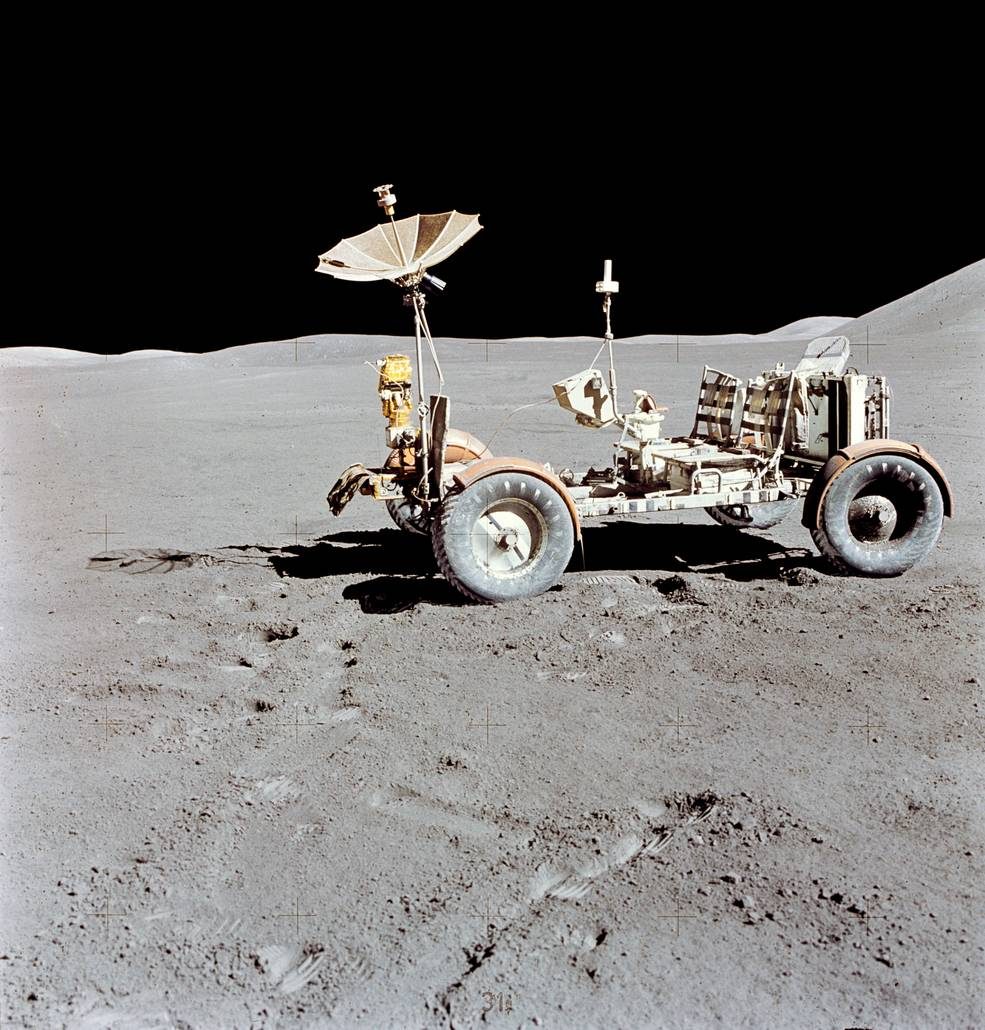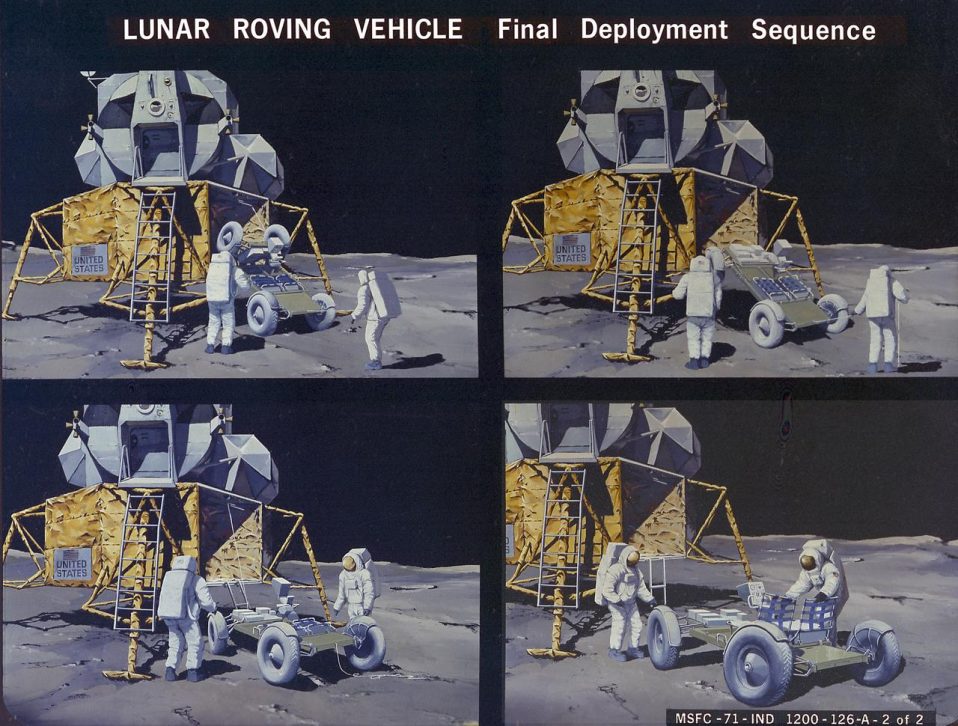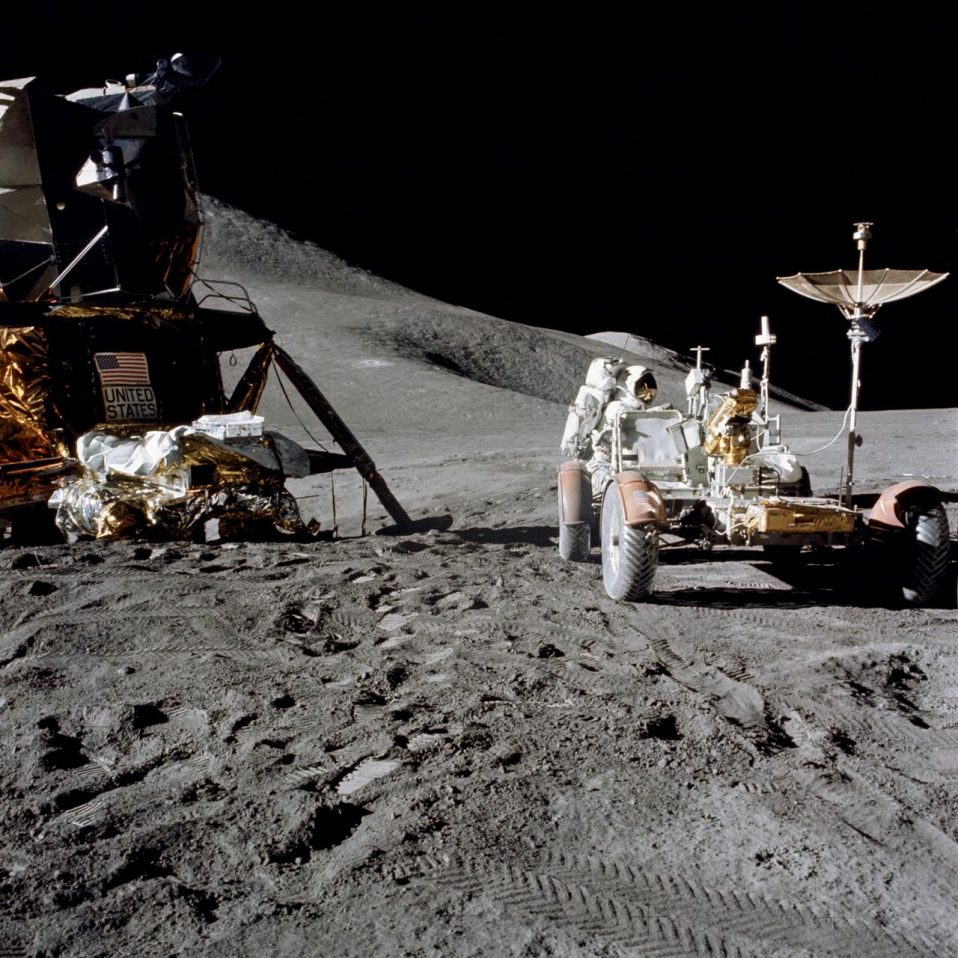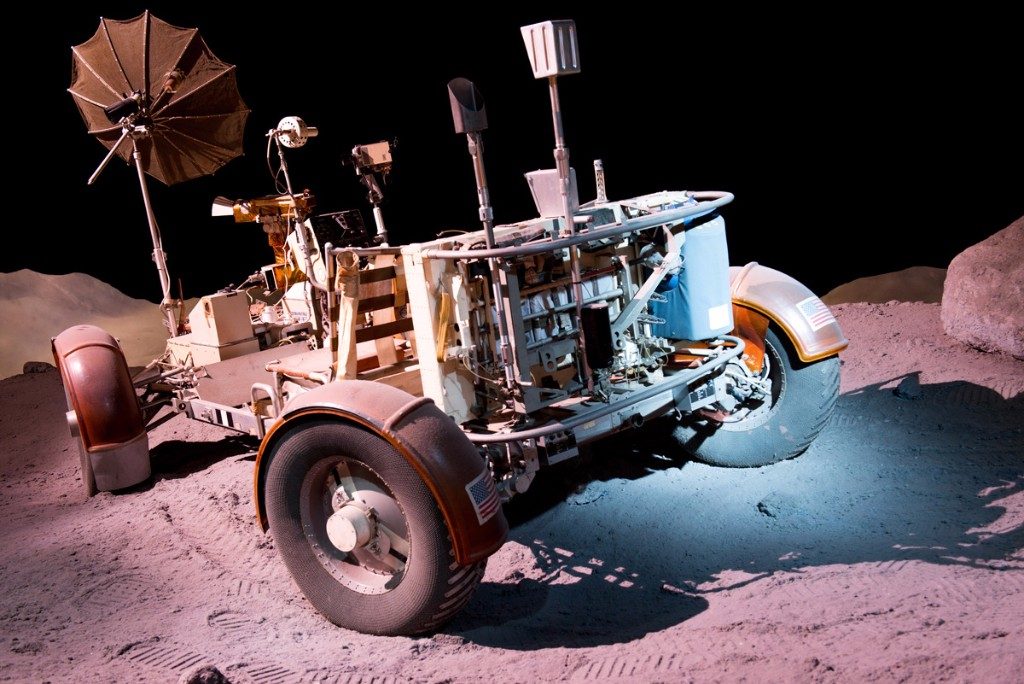 On this day, July 31, 1971, Apollo 15 became the first mission to use the Lunar Roving Vehicle (LRV). The Apollo 15 LRV was driven by astronauts David Scott and Jim Irwin.
On this day, July 31, 1971, Apollo 15 became the first mission to use the Lunar Roving Vehicle (LRV). The Apollo 15 LRV was driven by astronauts David Scott and Jim Irwin.
About the Lunar Roving Vehicle
The LRV was a lightweight, electric vehicle designed to operate in the low-gravity vacuum of the Moon. The LRV was developed in only 17 months and performed all its functions on the Moon with no major anomalies. The rover could travel at almost 10 mph (15 kph) and had a range of about 55 miles (89 kilometers).
Here’s a few details about how it operated:
- Steering: the LRV had a T-shaped hand controller situated between the two seats that controlled the four drive motors, two steering motors, and brakes. Moving the stick in any direction steered the LRV in that direction. To go backwards, astronauts activated a switch on the handle that put the LRV in reverse.
- Braking: pulling backwards on the hand controller activated the brakes. Pulling the handle all the way back activated a parking brake.
- Monitoring: astronauts monitored speed, heading, pitch, and power and temperature levels on the control and display modules in front of the hand controller.
- Navigation: astronauts navigated by the sun. The LRV included a Sun-shadow device which could give a manual heading based on the direction of the Sun, using the fact that the Sun moved very slowly in the sky. Additionally, the LRV continuously recorded direction and distance through use of a directional gyro and odometer. It then input this data to a computer which would keep track of the overall direction and distance back to the LM. That helped with mapping.
How did the astronauts deploy the Lunar Roving Vehicle?

The LRV was designed to fold up and travel compactly in a packaging on the Lunar Module (LM). To access and deploy it, the astronauts used a system of pulleys and braked reels using ropes and cloth tapes. The rover was folded and stored in Lunar Module quad 1 bay, with the underside of the chassis facing out.
First, one astronaut would climb the egress ladder on the LM and release the rover.
Second, the other astronaut would slowly tilt out the LRV using reels and tapes.
 Third, once released, the rover’s rear wheels automatically folded out and locked in place. After the rover was on the ground, the astronauts oversaw unfolding the front of the rover, and completed letting down the full frame by pulleys.
Third, once released, the rover’s rear wheels automatically folded out and locked in place. After the rover was on the ground, the astronauts oversaw unfolding the front of the rover, and completed letting down the full frame by pulleys.
Fourth, the rover components locked into place upon opening.
Fifth, the astronauts removed the cabling, pins, and tripods and set up the seats and footrests.
Last, the astronauts switched on all the electronics, and moved the rover away from the LM. Then it was ready for its travels on the lunar surface.
Where did the Lunar Roving Vehicle go?
The LRV was capable of traversing the lunar surface, allowing Apollo astronauts to extend the range of their extravehicular activities. The rover was used on three traverses, one per day over the three day course of the mission. On Apollo 15 the LRV was driven a total of 27.8 km in 3 hours, 2 minutes of driving time. The longest single traverse was 12.5 km and the maximum range from the LM was 5.0 km.
See a real Lunar Roving Vehicle trainer
Starship Gallery at Space Center Houston is home to multiple flown spacecraft and national treasures. Get an up-close look at some of the most amazing artifacts that trace the progression of human space exploration, such as a real Lunar Roving Vehicle trainer. In case you’re wondering, it’s a trainer because the rovers were left on the moon! Visitors can view it in a realistic setting.

Learn More:
Get more technical details about the LRV, from NASA’s Goddard Space Flight Center.
Watch this video of the Lunar Roving Vehicle traversing the lunar surface.








